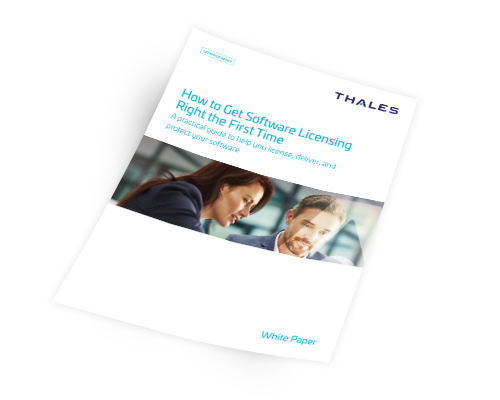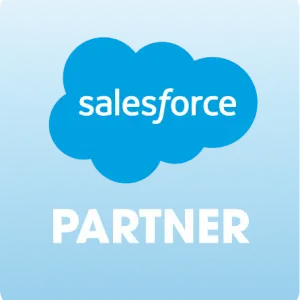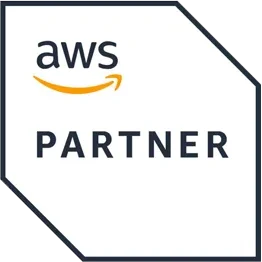
Darim Rahmatallah
Senior Product Manager, Thales
As a software vendor or device vendor, you're probably used to thinking about your users, features, and the function you want your product to serve. Licensing may be an afterthought. But software licensing is a key part of your monetization strategy.
First, you need to ask: what is a software license? Licensing is the tool that you use to protect your investment. But how you choose to manage your software licenses also influences everything from initial product design to marketing. That's why how you structure your software license agreements will be a critical decision.
So what is a software license agreement? This is the contract between you and your users, where you outline exactly how they're allowed to use your software. The right structure for you will depend on factors that include your resources and workflow, your long-term growth strategy, and your users themselves – who they are, their customer lifecycle, budget, priorities, and how they use your product.
To help you figure out the right direction, we've compiled this ultimate guide to software licensing models. We'll start with some software license definitions and help you find the licensing examples that make the most sense for you and your customers.
Software License Legal Definitions
Licensing is a key part of sales and financial growth, but first and foremost it's legal protection for your intellectual property. That's why it's important to understand the legal categories that include most licensing models: they're the foundation for your monetization strategy. Here are a few of the most important terms you should know:
What is a Proprietary Software License?
A proprietary software license is used when the creator of the software maintains control over who uses the software, how they use it, and the code itself. This covers the vast majority of commercial licenses and the vast majority of commercially-available software, although there are exceptions.
Any software that isn't proprietary falls under a few different open-source categories. Open-source software is shared publicly and anyone who wants can take the code, customize it, and build on it. It's not necessarily free and there can be limits on how it's used, but the original developer still has much less control. That's why a proprietary software license is usually the way to go for companies that plan to sell their software. They can easily ensure quality and provide support and updates, all without making life too easy for potential competitors.
What is a Commercial Software License?
At first glance, it seems like commercial and proprietary software are the same thing. In truth though, they refer to two different characteristics of software. A commercial software license is for any software that is meant to make money, either for its creators or for the people who use it. So commercial describes the software's purpose while proprietary describes its legal use.
Of course, these two often overlap. For example, a company that sells business software on a subscription basis but keeps the code confidential is using a commercial and proprietary license. On the other hand, more and more leading software companies are making parts of their commercial software available as open-source.
What is a Non-Commercial Software License?
A non-commercial license is exactly the opposite. It means that software cannot be used to make money, directly or indirectly. The software may be free or users may have to pay, but they still can only use it for private purposes. For example, they may use a desktop publishing program to create a birthday card for a family member but not to make an ad offering a customer a birthday discount.
What is a Private Software License?
Private license software usually refers to software that is for internal, or private, use – its owner or developer is also its only user. Applications covered by a private software license may technically be commercial, non-commercial, or proprietary, but those licenses aren't really relevant when nobody but the developer has access anyway.
Software License Methods: On-premises, Cloud, and Hybrid
Whether your software is cloud-based, on-premises, or in a hybrid environment, aligning your license management with your deployment ensures customer seamless access and compliance.
Cloud Licensing
If your software is deployed on the cloud, you need a cloud license server to manage user access from a central location. Chances are, you’ll want to deploy licensing models that fit with recurring revenue strategies including subscription licensing, seat-based (user-based) licensing, and usage-based (consumption) licensing.
On-Premises Licensing
Typical On-Premises Licensing
If your software is deployed in your customer’s local environment, choose an on-premises license server that will grant and restrict access from within the customer’s network. When it comes to pricing on premises products, the software license models you’ll most likely use are perpetual licensing, node-locked licensing, and floating licensing models.
On Premises with Cloud Access Experience
If you want to transition to recurring revenue without moving to cloud deployment, a cloud license server is bridge between more modern pricing models and traditional deployment. The license server provides cloud contention, giving users a SaaS–like access experience, even if your solution is not deployed in on a cloud.
Hybrid Licensing
In hybrid environments, users switch between local and remote access. A cloud license server deployed in hybrid environments helps you create unified workflows so that customers have the same experience accessing their software products, regardless of whether they’re SaaS or traditional applications. In addition, companies that want a comprehensive view of customer license usage, activation, and compliance across multiple products benefit from implementing a cloud license server.
white paper
How to Get Software Licensing & Entitlements Right
Check out our practical guide to navigating the process of licensing, delivering, and protecting your software. Discover the importance of optimizing your software licensing. Avoid common mistakes with the expertise you need to get it right the first time.
Software License Models: The Most Important
Using the different deployment methods and basic legal categories as building blocks, you can build a wide variety of licensing models. But let's start with some of the basics. Other licensing models are either rare structures that apply only to niche audiences or are variations and combinations of these essentials.
What is a Perpetual License?
A perpetual license is when the customer buys the software once and then can keep using it as long as they want. This was the most common model before cloud-based licensing became an option, although it still has some advantages. If you know you're going to want to use the software long-term, a single, clear fee is convenient and easy to understand. On the other hand, you usually don't have access to upgrades, patches, and support.
The most common reason to choose a perpetual license, however, has to do with hardware. If your software will be hosted directly on the user's device, it can be inconvenient to renew a license. This comes into play when you're talking about the Internet of Things or for devices that can't rely on internet access, either because of the locations where they're used or for security reasons.
What is a Subscription License?
The opposite of a perpetual license, a subscription license means you're charging a fee for a limited-time use. Usually, customers will pay per month or year. If customers don't renew the license agreement at the end of that period, they lose access to the software. This has become much more convenient, and more popular, since the growth of cloud-based licensing.
Subscription-based licensing gives users a lot more flexibility and requires a lot less commitment than perpetual licensing. As a developer, you get an ongoing relationship with your customers. Taken together, this means that a minimal license agreement for a short period at a low price can turn into an extensive license agreement that will be renewed for years at much higher prices.
What is a SaaS License?
With a SaaS license, SaaS customers pay to use the software for a certain amount of time, instead of buying a copy and owning it. This type of subscription model often comes with other services such as customer support, upgrades, and access to helpful content. The software vendor hosts the software in the cloud instead of the customer installing it on their own server or device.
Today, this is the standard model for almost all enterprise software. Because the software is hosted in the cloud, it's easy to update license agreements, allowing the software to scale easily. Vendors can efficiently offer SaaS licensing for the same software at a wide variety of price points.
What is a User-Based License?
User-based licensing (also called account-based licensing or identity licensing) allows users to access their licensed software through an authenticated username and password. It’s vastly different than other licensing techniques where software is accessed through a license key which is node-locked to a device.
The account-based licensing workflow is simple: a user logs in with their credentials (username or email and password) and is authenticated. The authentication can happen through Thales’ embedded identity management system or using your existing identity management system. The licensing mechanism then checks the license permissions to see which features the user has permission to use. The license also checks any other permissions, including those related to concurrency, consumption, or duration.
The experience of accessing software locked through user-based licensing is simple and familiar to most SaaS or B2C platform users.
What is a Concurrent Software License?
Buying a concurrent software license is like buying commodities in bulk. The user gets a certain number of licenses that can be used at one time and then any member of the organization can use them on any device. This model is both simple and flexible, making it a cost-effective choice. It's particularly useful for companies who work in shifts, or who are spread out over multiple time zones. When employees don't work at the same time, they can easily share the same license and the company doesn't have to worry about switching between users or figuring out in advance exactly who needs what.
What is a Floating License?
A floating license is another term for a concurrent license: software licensing based on the number of simultaneous users, no matter who they are or what devices they're using. It's called a floating license because it easily moves between different users within an organization.
What is a Feature License?
Feature-based licensing makes different features available to different customers. It allows you to offer the same software at different price points and even to use license agreements as a tool to customize your software for a variety of customer needs. This gives you a lot of control and is often combined with other software licensing models. For example, you've likely seen software vendors offering a "basic package" that offers some features and a small number of users. The "premium package", which allows for many more users, also includes bonus features. In this case, the software vendor is combining a user-based and feature license.
Software License Models: Other Options
Depending on your software and your customers, you may find that one of these less-common licensing models is the best choice for you. Don't be afraid to get creative.
What is a Metered License?
A metered license limits software access based on something that can be counted. The criteria can be the number of times the user has signed in, the number of times they've used a particular feature, or even the amount of time they've spent using the software. This licensing model includes some of the more specific models listed below and can easily be used in conjunction with another model. For example, a project management software can charge a monthly fee (subscription) that depends on the number of team members (user-based) and supports a limited number of tasks or projects (metered).
What is a Use Time License?
Use time licensing, also known as use-based billing or usage-based billing, is an example of metered licensing based on the amount of time the user has been signed in and using the software. The user pays in advance for a certain amount of time and once the time runs out, they lose access to the software until they pay for more time.
What is an Aggregate Use Time License?
An aggregate use time license applies multiple users to use-based billing. In this model, an organization can license a set number of hours and can keep track of which of its teams are using the software. Even more sophisticated use of aggregate use time licensing allows the customer to license different versions of the software with different features for teams with varying needs but tracks the company's aggregate software use as a single license for billing purposes.
What is a Fixed Term License?
A fixed-term license provides a start date, usually the date of purchase, and an end date for access to the software. Although technically a subscription license can also fit this definition, fixed-term licensing implies that the developer and customer don't necessarily expect to renew the license.
What is a Trial License?
Trial licensing is also defined by expectations: it is a fixed-term license that is intended to let users try out the software before they pay full price for it. The terms of a trial license can vary widely. It may include limited features or users and may require the customers to provide credit card information to access the software. It may not even be free, but have a discounted rate or a shorter commitment period than the developer usually offers.
What is a Project-Based License?
A project-based license is a temporary license that lets collaborators from outside an organization hop on to the organization's software licenses for as long as they're working together. Project-based licensing lets a software customer grant access to other people, sometimes even letting the customer decide on the features or use-time that the new user can access.
What is an Academic License?
An academic license is a license agreement designed with the needs of students, teachers, or educational institutions in mind. It might include features that appeal to those groups in particular and almost always offers discounted prices or different terms of payment than a non-academic license. For some vendors, this is a great way to get students familiar with their product so that they'll be more likely to choose it once they graduate.
What is an On-Demand License?
On-demand licensing is a form of metered licensing, often based on use-time. With an on-demand license, the software customer pays for a limited amount of time but they can spread it out however they want, i.e. it's available on-demand, not based on the amount of time that's passed.
What is an Offline Use License?
An offline use license is a fixed-term or subscription license that also lets a customer download the software to their own device and use it without an internet connection. It is equivalent to checking a book out of a library: you do have the physical book, and the librarian doesn't have access to it, but you haven't purchased it outright. The software may have the license expiration data embedded so that it can restrict access once the license period is over. Offline use licensing is an important option for equipment that is used in places without internet access, like secure facilities, construction sites, mines, or in long-range vehicles.
What is a Device License?
Device licensing is when software can be used on a certain number of devices. It is installed on the devices and then can be used by any user. If the customer wants to use the software on a new device, they have to uninstall it from a different device first. Schools, libraries, and other public institutions commonly use this type of license.
What is an Anchored License?
Anchored licensing is similar to device licensing except that the license is attached to a particular device instead of to a certain number of devices. This may be because the software is an inherent part of the device (think of a smart refrigerator) or it may simply be a way for the software company to keep tight control over the software's usage and security.
Choose Your Model and Manage it Wisely
Finding the right software licensing model requires a lot of research into your long-term strategy, your software's strengths and weaknesses, and your users' financial and security needs in addition to how you expect them to use your software. However, the work isn't done once you've picked a model.
Even once your software is licensed to customers, it'll be up to you to keep track of it. That's how you make sure that you're being paid for it, but it also lets you gather data that can show you how to improve your software and increase sales. Read more about Thales license management solutions and how we can help you make the most of every product you offer.



